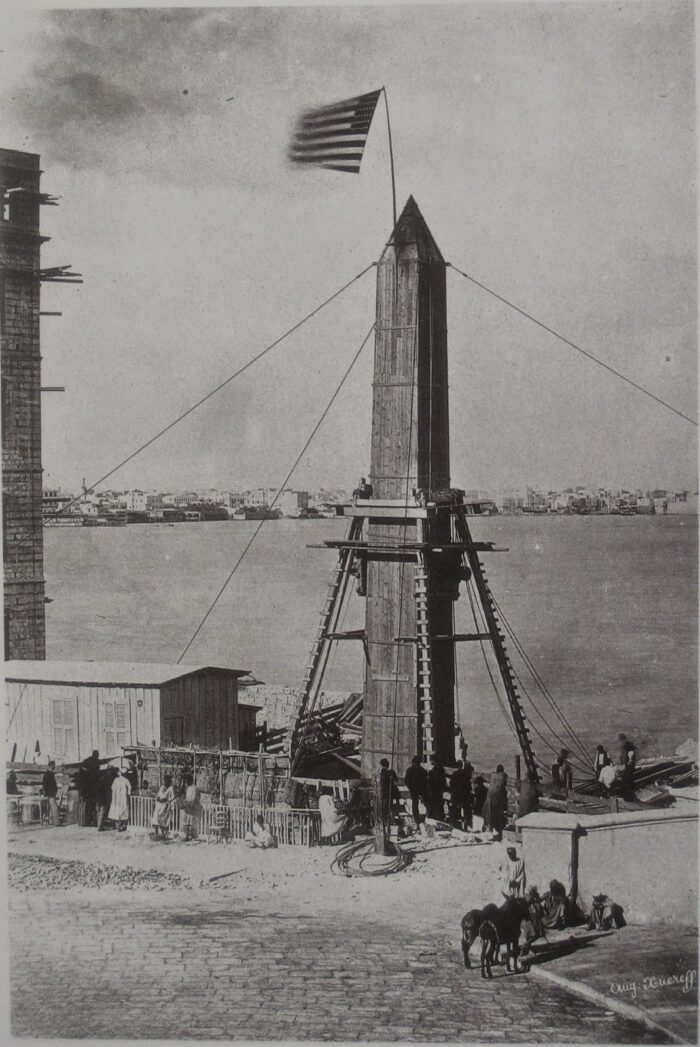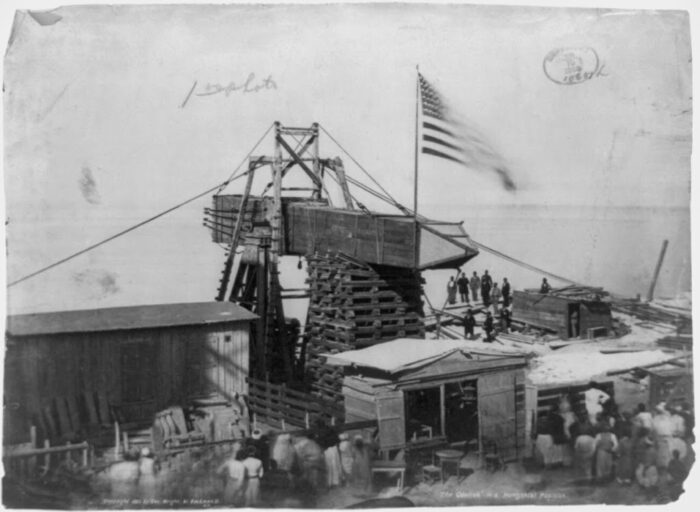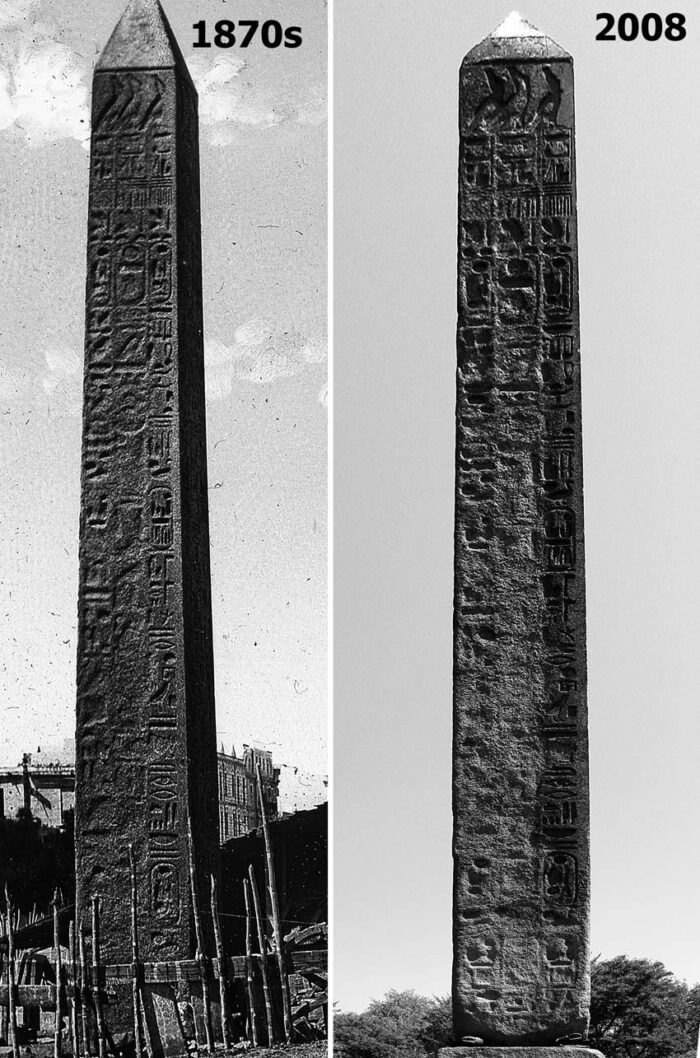Cleopatra’s Needle explains why she feels misunderstood by America’s public. September, 1880.

Interviewer: So, how would the public describe you?
CN-NYC: Well, you know how people are with celebrities. It’s all about looks. I’m 69 feet high and about 200 tons, made of red granite. And people are always trying to guess my age.
Interviewer: Do I dare ask?
CN-NYC: I’ll give you a hint. Archaeologists are guessing I’m around 3,500 years old. But only I know the real answer.
Interviewer: You’ve certainly had time to travel! The tabloids claim you have commitment issues with settling down somewhere. What’s your response?
CN-NYC: There’s such a stigma around being well traveled. If you’re jealous, just say so! I grew up in On, Egypt (called Heliopolis by the Greeks) and lived with my twin sister in front of the Temple of the Sun for about 1500 years. Caesar found us there around 12 or 10 BC, floated us down the Nile to Alexandria, and raised us in front of his Caesareum. Egyptian artifacts like myself were a hot commodity to the Romans.

Interviewer: Why do you think they liked you so much?
CN-NYC: I mean, look at me. Who wouldn’t be fascinated? But I also represented proof of Rome’s successful conquest of Egypt. I felt like a trophy wife. An archaeologist working for Napoleon to scout out Egyptian monuments for France described me as a “trophy of conquest” once. That’s when I realized countries desired me because it boosted their status.
Interviewer: Nobody should have to feel that way. Do countries still treat you as a trophy wife today?
CN-NYC: To be honest, yes. The United States only wanted me because Paris and London both had raised obelisks by 1831 and 1878, respectively – and they felt like New York was falling behind. It took about 10 years for America’s Consul-General to convince the Khedive of Egypt to give me away. The Khedive feared the backlash he’d face from Egyptian nationalists for surrendering such an important piece of Egyptian history. He caved in 1879, hoping to establish trade relations and gain funding from America. Transporting me presented quite the engineering challenge, but I was finally raised on January 22, 1881 in Central Park.


Interviewer: That must have been quite a change! How was your transition from Alexandria to New York City?
CN-NYC: Rough. During my first few years, New York’s harsh winters formed cracks in my surface, and flakes of stone eroded away. Scientists haven’t been able to identify one clear cause of my degradation, but the theory of salt hydration is one possibility. Anyways, in 1885, the New York Parks & Rec Department coated me in paraffin to repel water and debris, even though some geologists had warned against it. But those workers removed loose flakes of stone instead of reattaching them! I lost about 780 pounds of granite from that “protective” process. Many of the etchings on my surface were scraped away.

Interviewer: The irony is palpable. Maybe people don’t appreciate those etchings? Tell me more about them.
CN-NYC: Well, the symbols are hieroglyphs, a pictorial language. It’s basically all self-promo for King Thutmosis III – lots of talk about smiting other nations. He ruled when I was built, so monuments like myself reinforced his greatness to the public. You think I’m a diva? Try talking to a pharaoh.
Interviewer: *Laughs*
CN-NYC: Anyways, a few other rulers of Egypt after Thutmosis III, such as Ramses II, added inscriptions about themselves. It’s the same themes of support from the Egyptian deities, like Ra, the god of the sun, and Horus, the protector of rulers. Celebrities – always nursing their reputation.

Interviewer: Speaking of which – you wanted to clear up some rumors?
CN-NYC: Yes! People have interpreted my hieroglyphs in the wildest ways. The Daily Graphic claimed on August 28, 1880 that I depict wanderings of ancient Mexicans though America and Asia to Egypt. No idea where they’re getting that from. And The Mercury wrote on August 15th that I somehow predict the future of America? The tabloids are out of control.
Interviewer: It must be so frustrating to have other people decide what your own inscriptions mean – especially if they can’t read hieroglyphics! Have you felt like anyone else is taking advantage of your fame?
CN-NYC: Yes! A string brand that engineers used to transport me from Alexandria to NYC is putting images of me all over their packaging. Some candy stand traveled next to me the whole time I was being transported through NYC to Central Park. Restaurants also are offering a drink called the “Obblyish”, served with this needle-shaped swizzle stick. I’m considering suing, but I respect their hustle.
Interviewer: You’re generous for letting them off that easily.
CN-NYC: Eh, I’ve been around for a while. And I’m tired out from this rainy NYC weather.
Interviewer: Well, I think we’re about at time. Is there anything else you’d like to say?
CN-NYC: The tabloids paint me as this appearance-obsessed, commitment-phobic needle. But the reconstructive procedures I’ve undergone and places I’ve moved have been chosen by countries and organizations more powerful than me. Fame doesn’t always equal power, especially in my case. Thanks for having me tonight.
Helen Lieberman is a sophomore from Newfields, New Hampshire. On campus, she sings in an A Cappella group and frequents the Chobani Cafe. Helen is deciding between Economics or Art History as her major, but hopes to continue her studies within the art history department either way.
